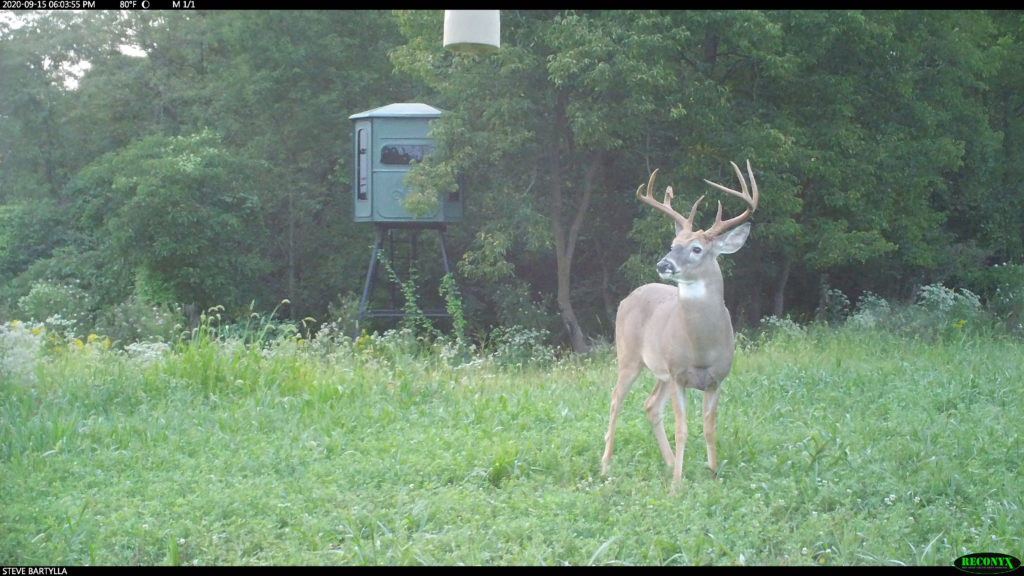Bucks feed mostly during early morning and late afternoon or early evening hours. During the day, they rest or stay in shaded areas to avoid heat and conserve energy.
Deer hunting is one of the most common yet challenging outdoor activities for hunters across the world. As it requires a great deal of preparation, patience, and knowledge of deer behavior, it’s essential to understand the feeding habits of bucks. Hunting during the right time, when bucks are more active, increases the chances of a successful hunt. While it’s widely known that bucks are most active during the rutting season, which is usually late fall or early winter, the time of day when they feed is also important to consider. In this article, we will explore the feeding habits of bucks and provide you with some helpful tips on how to hunt them successfully.

Credit: www.deeranddeerhunting.com
Contents
The Basics Of Buck Feeding
Bucks, or male deer, have a feeding routine that varies depending on the season. During the summer, they often feed at dawn and dusk to avoid the heat of the day. In the fall, they will start feeding during daylight hours to build up their energy for the breeding season.
In the winter, bucks will feed throughout the day to stay warm and survive the harsh weather conditions. It’s important to pay attention to when bucks are feeding in your area if you’re a hunter or wildlife enthusiast. Knowing their routine can help you plan your activities and increase your chances of observing these majestic creatures in their natural habitat.
Keep in mind that bucks may adjust their feeding habits based on factors such as weather and food availability.
Factors That Affect Buck Feeding Habits
Bucks have different feeding habits that vary throughout the day, depending on different factors. The season greatly affects their feeding habits, as bucks tend to feed less during peak breeding season. Weather conditions such as rain can also affect their feeding pattern.
Location could also play a significant role since different feeding grounds offer different food sources for bucks. With hunting pressure, bucks are more likely to feed during the night rather than the day when there is less activity. Lastly, food availability has a significant impact on when bucks feed.
They are more likely to feed during the night when they can find enough food to satisfy their appetite. By understanding these factors, hunters can increase their chances of spotting a feeding buck.
Understanding Buck Movement In Relation To Feeding Habits
Bucks typically feed in the early morning and late evening hours when it is cooler. Understanding their movement in relation to feeding habits is crucial for hunters and wildlife enthusiasts. Bucks have a home range and core areas of their habitat that they tend to frequent.
Factors such as weather, season, and availability of food can affect their movement patterns. Bucks may move farther from their core areas in search of food during periods of food scarcity. It is important to note that while bucks do have general feeding habits, their behavior can be unpredictable and varies based on many different factors.
Wildlife enthusiasts should observe and learn more about these creatures to have a better understanding of their feeding behavior and movement patterns.
Best Time For Buck Feeding
Bucks are often active during the early morning and late evening, making these times optimal for feeding. Timing is important as it can affect antler growth. The physiological processes involved in antler development are influenced by feeding schedules. Studies show that restricted feeding can have a negative impact on antler growth.
Feeding at the right time can help bucks reach their full potential. It’s important to consider the quality of the food as well as the timing. Feeding during the optimal times can help ensure that the nutrients are properly utilized.
Overall, understanding the best times for buck feeding can aid in effective habitat management and hunting strategies.
Tips For Hunting Bucks Based On Feeding Habits
While hunting for bucks, it’s important to understand their natural feeding behaviors. Bucks typically feed at dawn and dusk, making these prime times for hunting. To increase your chances of success, scout for feeding hotspots such as food plots or cornfields.
During midday, bucks tend to bed down giving hunters an opportunity to make a move. You can also plan your hunting behaviors based on feeding time. For example, setup your stand near a feeding hotspot during the morning or afternoon feeding times.
With these tips and insights, you can increase your chances of success while hunting bucks based on their feeding habits.
Frequently Asked Questions Of What Time Of Day Do Bucks Feed?
Conclusion
As we wrap up our discussion on what time of day bucks feed, it’s clear that bucks are crepuscular creatures that prefer to take their meals during the early morning and late evening hours. While this isn’t an absolute rule, it’s a good starting point for hunters and wildlife enthusiasts.
However, it’s also important to note that other factors like weather, season, and food availability can all impact a buck’s feeding schedule. Keeping these variables in mind can help you plan your outings more effectively and increase your chances of a successful hunt.
Whether you’re an avid hunter or simply enjoy observing wildlife, understanding the feeding habits of bucks is an essential part of understanding these magnificent creatures. With a bit of patience and observation, you’ll be able to spot these elusive animals in their natural habitat and appreciate all they have to offer.

